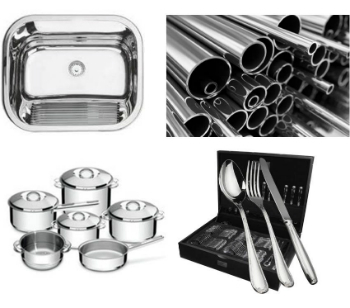When studying the atomic models of Dalton, Thomson, Rutherford and Böhr, it is noted that atoms are seen in isolation. In reality, however, not even the most advanced microscopes are able to allow us to see an isolated atom.
However, with the development of technology, machines were created that allow us to visualize colored spots that give us the location of these atoms in the material studied.
The first equipment that allowed us such feat to generate real images of surfaces with atomic resolution was the Microscope Scanning Tunneling Microscope or simply Scanning Tunneling Microscope (STM). It is then possible to resolve surfaces on an atomic scale and visualize real images of atoms and molecules on the surface of a solid.
The tunneling microscope (STM) was created in 1981 by scientists Gerd Binning and Heinrich Rohrer, from IBM Zurich, who ended up receiving the Nobel Prize in Physics in 1986 for this discovery.
Its working principle is based on the principle of Quantum Mechanics of the dual behavior of the electron, that is, it can behave sometimes as a particle and sometimes as a wave. This means that, as a wave, it can penetrate places that, before, according to Classical Mechanics, would be impossible and, in addition, can tunnel through a potential barrier that classically separates two regions. allowed. Thus, it was only with the formulation of Quantum Mechanics that these advances were possible.
Thus, this non-zero probability that the wave has of crossing a barrier is a phenomenon known as tunneling or tunneling.
Do not stop now... There's more after the advertising ;)
An electrical voltage is applied between a tungsten needle with an extremely fine tip and the sample to be analyzed. This voltage serves to increase the probability of electron transfer. Because what will happen is that, when the needle gets closer to the sample, the electrons from the needle will be tunneled into the sample.
This needle moves over the surface of the material, scanning it, and the tunneled electrons generate a small electrical current, which is picked up by the machine circuit, sending this information to the computer, which surveys the topography of the atoms on the surface of the sample, that is, records their relief (potential).
The strength of the current depends on the distance; and its constancy depends on the variation of the distance between the needle tip and the sample.
Using this technique, several atomic images of semiconductor surfaces have already been recorded, as well as chemically adsorbed molecules.
The analyzed samples must be conductive and, for a better result, must be done in a vacuum. They can also be taken in the atmosphere, but air can make the sample impure and compromise the image obtained.
Thanks to the invention of the STM, it became possible not only to visualize atoms and molecules, but also to measure and manipulate them. And this has triggered the development of a wide variety of scanning probe microscopes (SPM).
By Jennifer Fogaça
Graduated in Chemistry
Would you like to reference this text in a school or academic work? Look:
FOGAÇA, Jennifer Rocha Vargas. "Scanned Tunneling Microscope (STM)"; Brazil School. Available in: https://brasilescola.uol.com.br/quimica/microscopio-tunelamento-com-varredura-stm.htm. Accessed on June 27, 2021.



